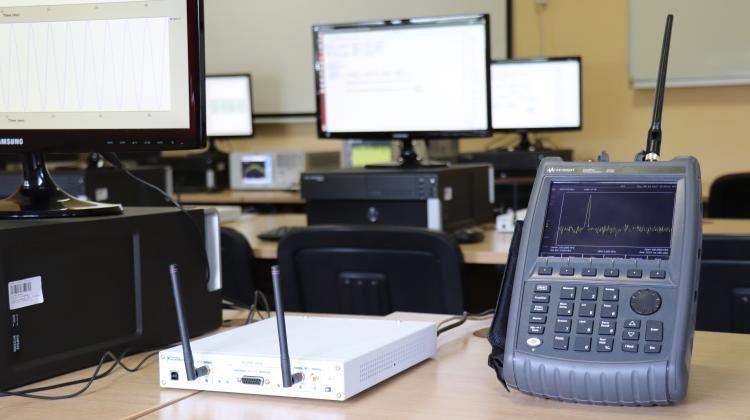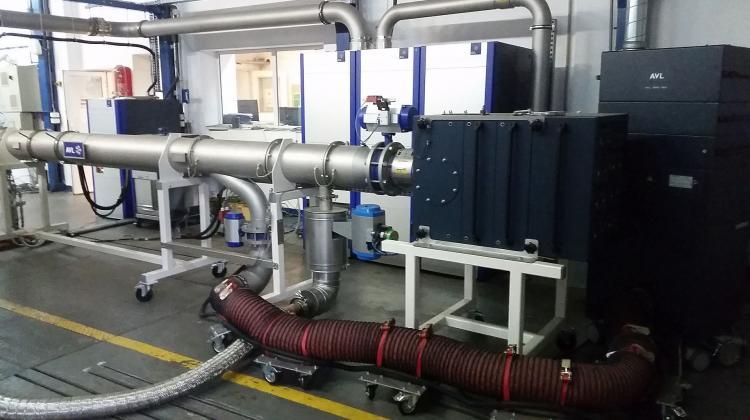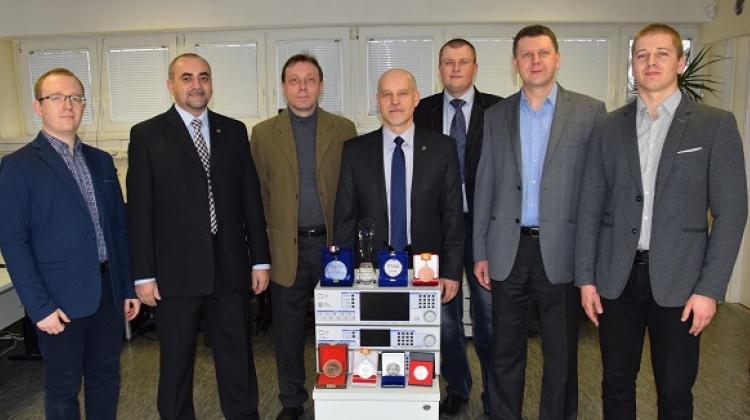Tuning in: Smart radio to borrow unused frequency
 Programmable radio platform and a portable spectrum analyser. Credit: Robert Krawczak.
Programmable radio platform and a portable spectrum analyser. Credit: Robert Krawczak.
With frequencies for new cellular, TV and radio communication becoming scarcer, scientists are developing a smart radio that can 'borrow' unused bandwidth when its owner does not need it.
THE ROAD TO SMART RADIO
Radio systems have more and more users with data transmission taking place not only in mobile telephony, television and radio but with drones, cameras and education platforms at universities. But although companies and institutions have permanent frequency resources at their disposal, not all users make the most of their quota.
Dr. Krzysztof Malon from the Faculty of Electronics of the Military University of Technology in Warsaw said: “When we identify that the original users, those to whom the frequency has been assigned, do not broadcast at a given frequency in our area, then we could buy it and use it for the purposes of our transmissions.”
The mode of operation he describes is called dynamic spectrum access. To understand the concept of spectrum, you need to know that in a vacuum electromagnetic waves travel at the same speed, but differ in frequency and length. The various wavebands as a whole form the spectrum of electromagnetic radiation. It covers a wide range of wavelengths: from gamma radiation to radio waves.
Although in Poland such 'borrowing' of spectral space for communication is inconsistent with regulations, work is underway all over the world on the necessary technical and legal solutions that will make it possible.
IN SEARCH OF SPECTRAL HOLES
Dr. Malon examined band use on the Military University of Technology campus and found that by analysing the time-frequency space in a specific area, it is possible to identify spectral holes where there was no transmission.
In his doctoral dissertation, Dr. Malon presented a method of surveying the radio environment. The algorithm he developed evaluates individual frequency channels and identifies those bands that are formally occupied, but not actually used. In addition, it indicates which radio channels are useful for communication.
USING SPECTRUM IN SCIENCE AND TEACHING
Universities use the allocated frequencies in research and development. When engineers create new systems and new signal processing methods, they need access to the spectrum. This allows them, for example, to connect to land platforms or drones.
Separate frequencies are needed to educate students in the use of civilian and military radio stations. They often work on satellite frequencies. Students learn in real conditions where everything has to be done according to the rules, including bandwidth allocation. Science clubs of students who build radio devices operate in a similar way.
The Military University of Technology students also use educational platforms containing Software Defined Radio (SDR). They develop their own radio transmitters and receivers, and also programme. Dr. Malon said: “Such a platform can, for example, be programmed to receive a specific radio station by uploading one software, and then, without changing the hardware, by writing a different software, it can receive a mobile phone signal.” He added that an educational radio platform can operate in multiple bands and that is why it needs allocated frequencies in certain bands.
Malon won the 3rd prize of the Foundation for the Development of Radio Communication and Multimedia Techniques in a national competition for the best doctoral dissertation in this field. He uses the results of his research by participating in the work of the European Defence Agency. Experts from all over Europe are working to create a smart radio that is aware of and interacts with its surroundings.
PAP - Science in Poland, Karolina Duszczyk
kol/ agt/ kpa/
tr. RL
Przed dodaniem komentarza prosimy o zapoznanie z Regulaminem forum serwisu Nauka w Polsce.

















